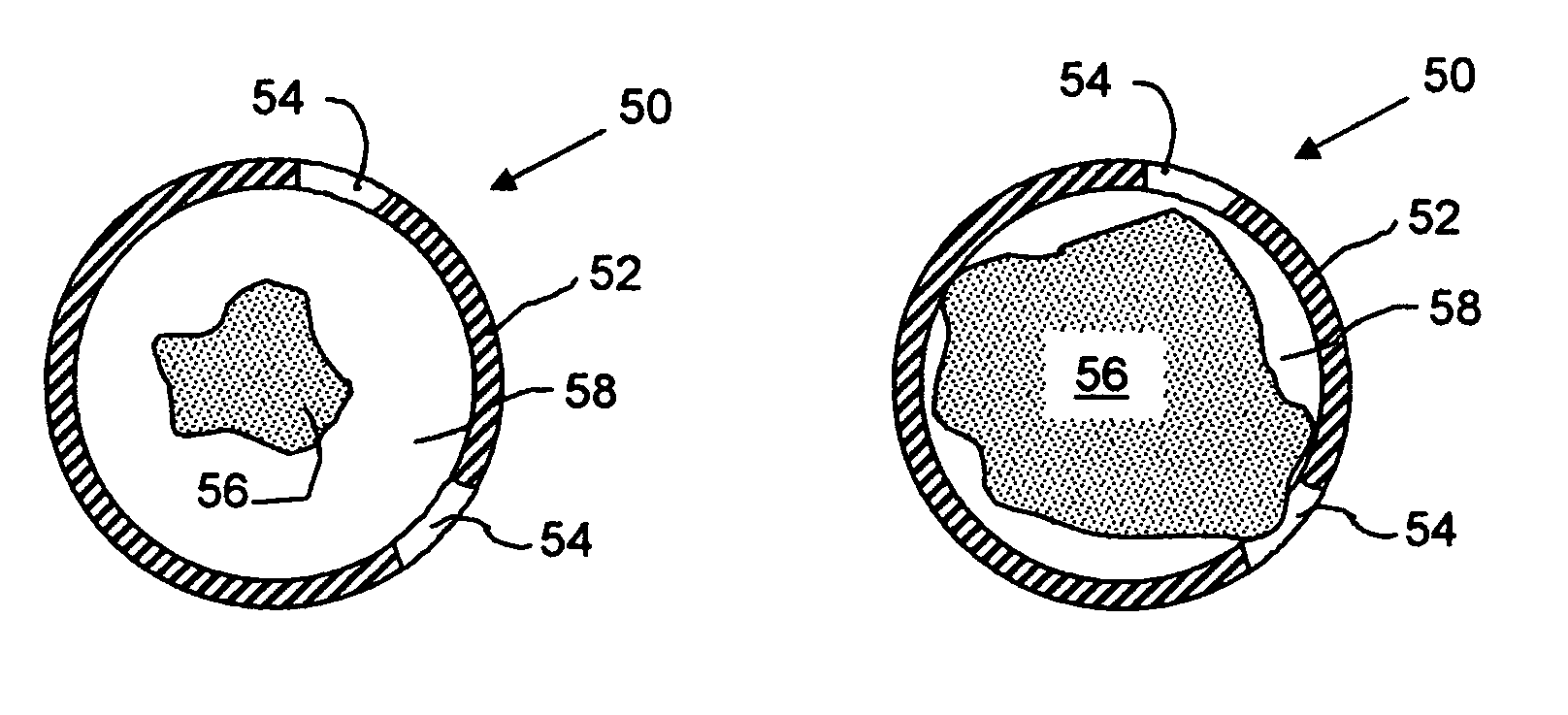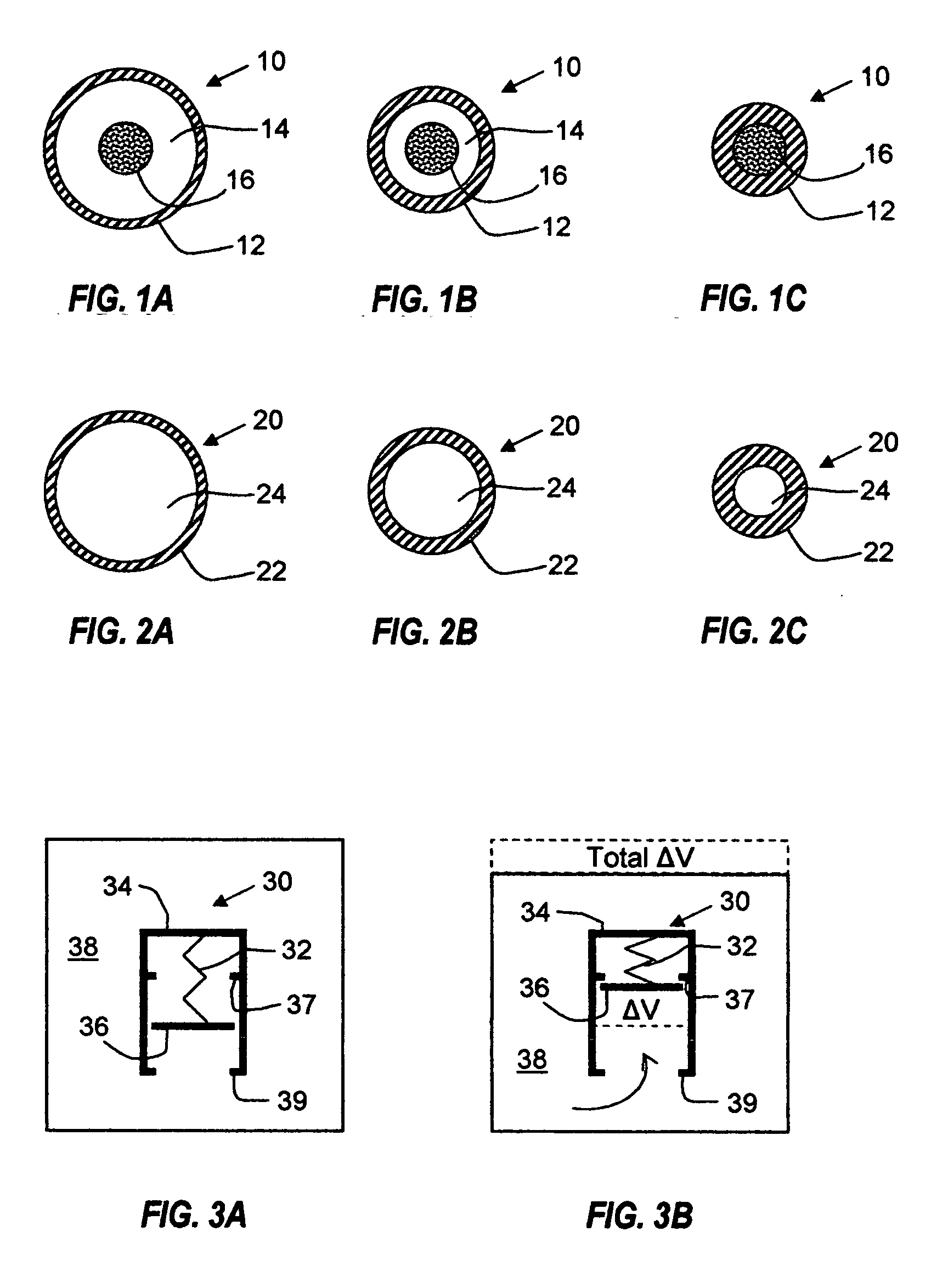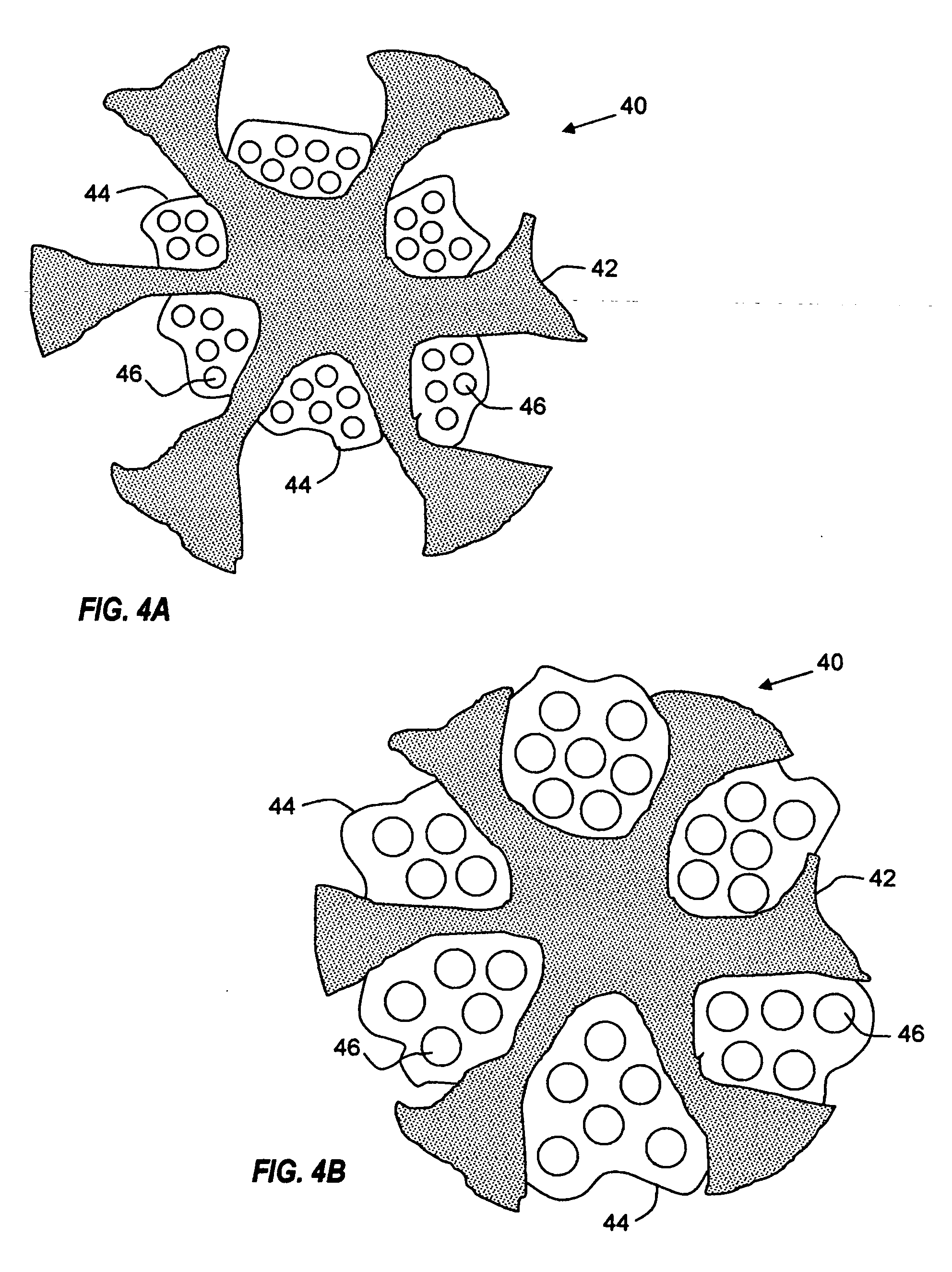Controlled variable density fluid for wellbore operations
a technology of fluids and wellbores, applied in the direction of wellbore/well accessories, transportation and packaging, and sealing/packing, etc., can solve the problems of limited, if any, efforts made during conventional air, mist, and density changes resulting from this behavior to change the design of the wellbore, and no effort is known to be made to intentionally modify the compressibility (density) of classic drilling fluids. to achieve the effect of increasing improving the lift of the fluid
- Summary
- Abstract
- Description
- Claims
- Application Information
AI Technical Summary
Benefits of technology
Problems solved by technology
Method used
Image
Examples
Embodiment Construction
[0027] During the drilling of a wellbore, fluids are used to control the pressure of exposed formations. Fluid pressures developed must be sufficiently high to prevent flow of formation pore fluids into the wellbore while also be sufficiently low to prevent fracturing or lost returns to formations elsewhere in the open hole section. This process is referred to as staying within the pore-frac window. A consequence of efforts to stay within the pore-frac window is the setting and cementing of strings of casing or liner. That is, the conventional solution to staying within the pore-frac window is to set and cement pipe and then change the mud weight in the next section of the borehole. Alternative solutions encompass, but are not necessarily limited to, extending or pushing the open hole length to and beyond a “safe” limit prior to setting and cementing pipe, including temporary strengthening or lining of the hole and intentional plugging of any potential flow zones. These last two con...
PUM
| Property | Measurement | Unit |
|---|---|---|
| particle size | aaaaa | aaaaa |
| volume ratio | aaaaa | aaaaa |
| volume ratio | aaaaa | aaaaa |
Abstract
Description
Claims
Application Information
 Login to View More
Login to View More - R&D
- Intellectual Property
- Life Sciences
- Materials
- Tech Scout
- Unparalleled Data Quality
- Higher Quality Content
- 60% Fewer Hallucinations
Browse by: Latest US Patents, China's latest patents, Technical Efficacy Thesaurus, Application Domain, Technology Topic, Popular Technical Reports.
© 2025 PatSnap. All rights reserved.Legal|Privacy policy|Modern Slavery Act Transparency Statement|Sitemap|About US| Contact US: help@patsnap.com



